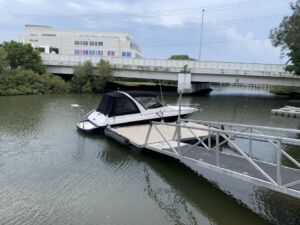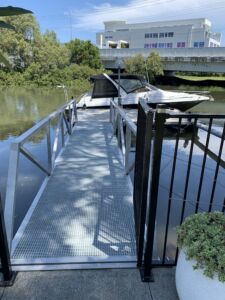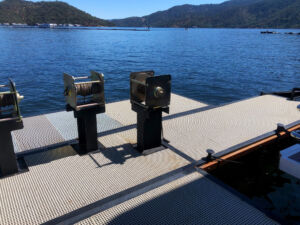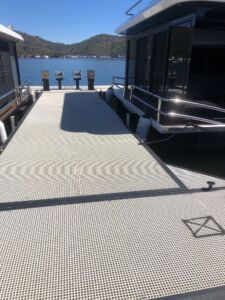Australia is known for its beautiful coastlines, and coastal infrastructure—like marinas, piers, and docks— that play a critical role in supporting tourism, local businesses, and communities. However, aging infrastructure and the high costs of maintaining it have become a growing concern for many marina operators. Factors like wear and tear, corrosion and decay, along with damage from frequent boating impacts, require constant maintenance. Many operators find themselves operating on slim budgets, making it crucial to explore solutions that can reduce frequency of maintenance and costs.
The burden of frequent marina maintenance
Most marinas rely on traditional materials like wood and metal, which are susceptible to damage from weather, corrosion by salt, and decay. Operators face challenges such as:
- Annual inspections to tighten fittings and repair loose connections
- High maintenance costs from replacing critical components like whalers and tie rods every 10 years
- Safety concerns related to slipping hazards and structural degradation over time
Many marina operators face similar challenges. Managing expansive infrastructure—often spanning several kilometres—demands regular inspections to combat the wear and tear caused by constant movement, boat impacts, and environmental exposure. With these inspections necessary to address ongoing damage, anything that can extend maintenance intervals or reduce replacement costs can make the difference between an economically viable marina and one struggling to survive.


(Left: Ageing metal pontoon; Right: Pontoon upgraded to Terra Firma Composite FRP)
Rethinking marina infrastructure for reduced maintenance
Some forward-thinking marinas, like Eildon Marina, have started exploring alternative materials like Fibre Reinforced Plastic (FRP) to reduce long-term maintenance and operational costs. FRP offers significant advantages over traditional materials, such as:
- Corrosion resistance: FRP withstands the corrosive effects of saltwater, reducing the need for frequent repairs.
- Lower maintenance requirements: Its durability under tough conditions means fewer inspections and replacements.
- Safety enhancements: FRP’s non-slip surface and lightweight nature reduce the risk of accidents while making installations easier.
Faced with the same challenges that many marinas encounter, Eildon Marina experienced deterioration of its wooden docks, leading to constant upkeep, significant slip hazards and increased costs. By switching to Terra Firma’s FRP composite materials, the marina was able to significantly reduce maintenance efforts while also enhancing safety. This switch not only extended the lifespan of their infrastructure but also resulted in substantial cost savings. The long-term durability of FRP has ensured that Eildon Marina remains both safe and operational, demonstrating the clear benefits of moving away from traditional materials.


Protecting Aussie marinas with lower maintenance and low cost materials
By moving away from traditional materials, marinas can cut costs and reduce the frequency of repairs, making their operations more sustainable and efficient in the long term. Composite materials like FRP not only offer long-lasting durability but also align with environmental and safety standards.
At Terra Firma, we imagine infrastructure differently. Explore our FRP composite solutions here.
Share this
Discover the Terra
Firma difference
Learn how we can help support your next project